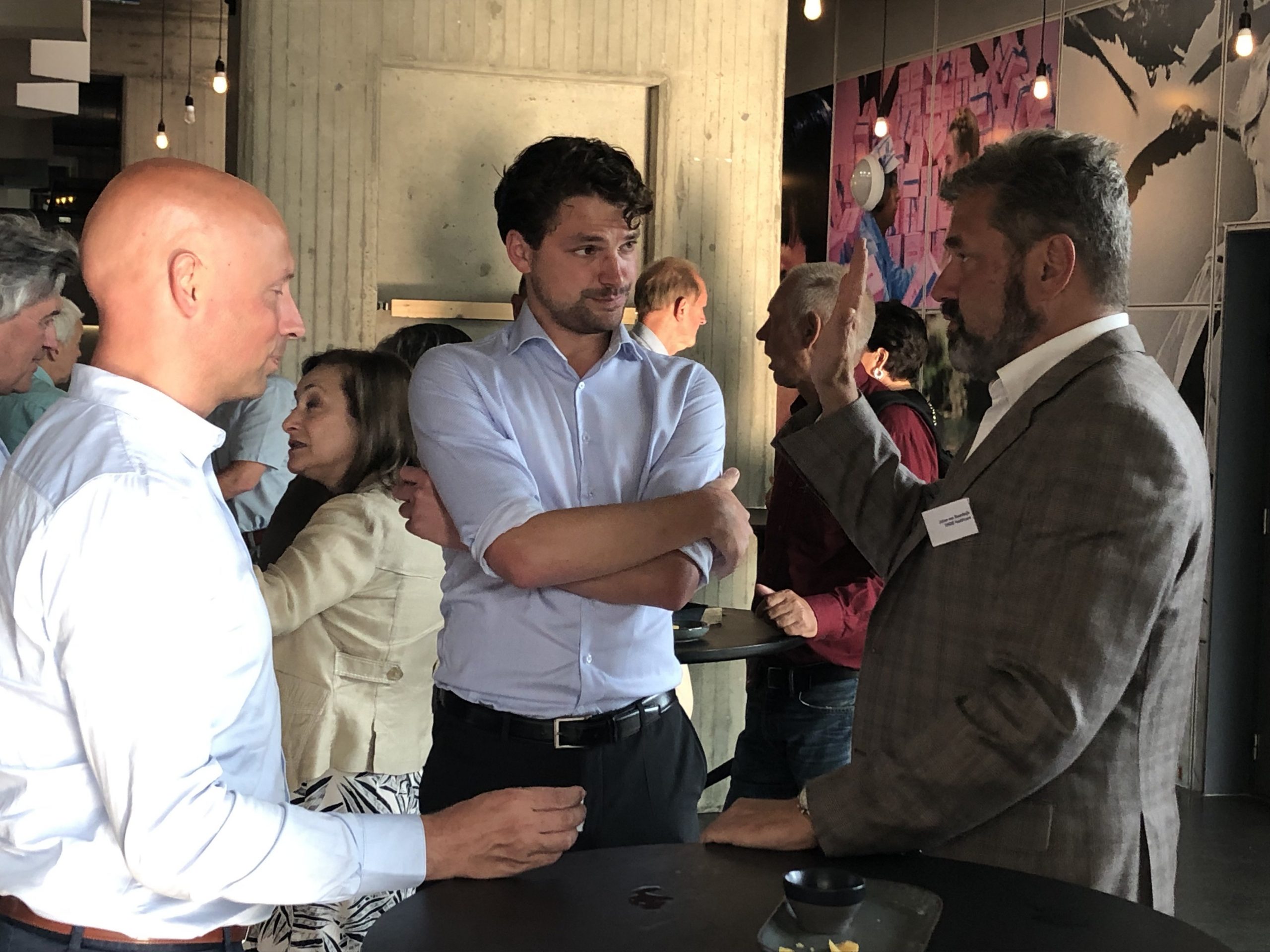
Standing still is a step backwards. Entrepreneurs from various disciplines feel an ever-increasing need to innovate. Exactly how they should approach this often remains difficult, especially for small and medium-sized enterprises (SMEs). That is why the Eindhoven University of Technology (TU/e), Fontys, MKB Eindhoven and Eindhoven Engine are attempting to inspire innovative entrepreneurs with lectures on the application of promising technologies.
A new series of lectures was launched in August under the name of HIGH5. Here, TU/e professors share their knowledge with entrepreneurs and hope to learn from them through these as well. After such a theoretical lecture, innovative SMEs (often spin-offs from the university) are able to see how that scientific knowledge is applied in their company. “For participating SMEs, it presents a low threshold for access to science and its application potential,” says Monique Greve, initiator of the lectures. The lectures are about 3D printing, photonics and data science and other subjects.
“By combining theory and practice, we want to get entrepreneurs enthusiastic about innovation and inspire them to work with it themselves,” Greve explains. It is more difficult for SMEs to find a way into a university or another knowledge institution. That’s why Greve, together with colleague Herman van Hoeven, has been organizing these low-key lectures for the past five years.
The series kicked off in August with a session on circular economy. “A subject which every entrepreneur has to deal with,” Greve states. That entrepreneurs are interested in these types of innovations was clear to see from the huge list of applicants. “We even had to move to a larger hall,” she says with pride. For the second lecture too, on 3D printing, there were far more applications than available places. “
Bringing companies and knowledge institutions together
It is very interesting for small and medium sized companies to see how a particular technology works and who is involved with it. “Large companies often know where to go for information or ask questions, but this is more difficult for smaller companies,” she explains. For instance, when it comes to robotics or photonics, SMEs are often on their own when it comes to the innovation process. “That’s why we try to provide information during the lectures that suits their needs. We then try to bring companies into contact with each other, along with the employees of the partners involved, by following up with a networking get-together.”
Building a bridge to the market
Through these lectures, the organizing parties try to bridge the gap between research and actual practice related to a particular technology. “This can be done in two ways. Sometimes a researcher is interested in bringing a technology forward to the market. Then we bring the technology from the university into the market, so to speak,” explains Greve.
“On the other hand, there may also be a market demand for a particular technology. Then we are able to establish a link which enables them to move ahead.” They may contact TU/e Innovation Lab or one of the other partners if they have any questions resulting from the lecture. “It depends on which partners are best able to help the entrepreneur,” says Greve.
As an example, the university has for this purpose De Vragenbank (The Question Bank). This is an initiative which enables SMEs to ask students questions about technology. They then provide the company with a basic report containing an answer. After that, companies and students could possibly work together in the long term in order to actually realize plans. “Students and companies are working together on innovation in this way.”
A look into how things work in practice
The lectures are not only interesting for entrepreneurs. “It is also very educational for scientists to get information in return from those in the field as to how things work in practice,” says Greve. “Technologies are being developed at the university, which means that there is an enormous amount of knowledge. The translation to companies is frequently difficult. That’s why it’s good that professors share their ideas with entrepreneurs through these kinds of lectures. These are often the ones who will ultimately apply the technology.” This is how the university aims to create support and enthusiasm for technologies that will eventually appear on the market.
There are still three lectures in the series to attend. These take place on the last Monday of the month and cover the Internet of Things/Digital Twin, Data science and Photonics. More information can be found here.

